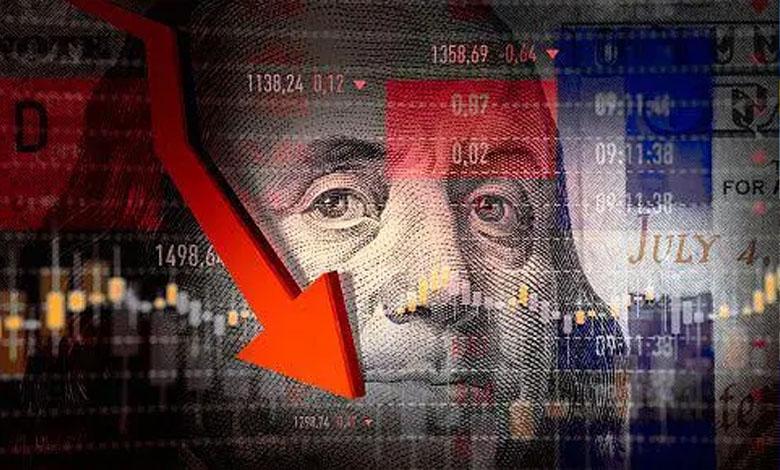When the dollar is no longer king: what is happening to the world monetary order and what does Ukraine have to do with it?

American investor and founder of Bridgewater Associates Ray Dalio considers, that the global financial system is on the verge of serious transformation, and possibly collapse. In his note he analyzed the impact of trade restrictions and US tariff policy on the global economy.
According to Dalio, despite expectations that the effects of the tariff war will be temporary, more and more companies recognize that the changes are already steel irreversible Exporters and importers are reducing their presence in the US market, realizing that even with reduced tariffs, confidence in trade relations with the US has been undermined. This, according to a well-known investor, leads to a gradual decrease in interdependence with the American economy.
He predicts, that regardless of the outcome of the Sino-American negotiations, major players will begin to build alternative trade alliances and use new payment systems and currencies. This process fragments the global economic space, threatening the stability of currencies and exacerbating geopolitical conflicts.
Dalio considers, that the US must urgently rethink its policies, focusing on adjusting the trade balance and reducing the national debt, in order to avoid a deeper financial crisis.
As background to this situation, he recalled the turbulence caused by the tariffs introduced by the Trump administration. These measures have affected stock markets and cryptocurrencies, and subsequent decisions on China have only added to the volatility, creating conditions for speculation and sharp swings in assets.
What is a “world monetary order” and why is it important?
Imagine the world economy as a giant mechanism: countries trade, exchange currencies, invest and accumulate reserves. This mechanism is working thanks to the “world monetary order” – a system of rules, currencies and agreements that ensure the stability of global finances.
After the Second World War, in 1944, the country Agreed about the Bretton Woods system: the US dollar became the main currency, pegged to gold at a fixed rate of $35 per troy ounce, and other currencies pegged to the dollar. This provided stability, but in 1971 the US de-pegged the dollar to gold and the world moved to floating exchange rates.
Despite this, the dollar remained the main reserve currency: it is used for most international settlements, oil trade, and the currency reserves of central banks are stored.
As an issuer of US dollars have a unique advantage: they can finance budget deficits by selling debt obligations that other countries willingly buy. This allows the USA to live “in debt”, and the world to trust that these debts will be repaid.
However, the growing US national debt and political instability raise doubts about the reliability of the dollar. Ray Dalio warns, that hopes for the stability of the dollar may be “naïve”.
The collapse of the world monetary order is not necessarily a sudden catastrophe, but a gradual process of loss of confidence in the dollar, the formation of alternative currency blocs and the growth of financial instability.
This can lead to exchange rate fluctuations and inflation, rising debt servicing costs, difficulties in international trade, and reorientation of countries to alternative currencies.
Ray Dalio urges to the “harmonious rebalancing” of the global economy: reducing debts, restoring production and reducing dependence on the dollar. He believes that without these changes, the world may face a deep financial crisis
In today’s world, where countries are looking for alternatives to the dollar, it is important to understand these global processes and prepare for possible changes in the financial system.
The global economy is bursting at the seams: what does this mean for the world and Ukraine
Until recently, the world economy resembled a giant web where everything is connected to everything: Chinese goods on the shelves of American supermarkets, Ukrainian grain in African markets, German auto parts in Turkish workshops. But this model began to collapse. And increasingly economists they speak about the fragmentation of the global order — the disintegration of a single economic space into separate camps.
This is not about fantasy, but about the fact that countries no longer trust each other as before. The US is imposing tariffs, China is responding with restrictions, Russia and Iran are looking to circumvent SWIFT, and the BRICS countries are already open are discussing creating its own currency instead of the dollar.
All this leads to the emergence of new financial and trade blocs: the United States with G7 partners on the one hand, China, Russia, Brazil, India and others on the other. And everyone plays by their own rules.
It is not just “economic difficulties”. This is a real global rift. The IMF broadcasts the opinion: the loss of a unified system can cost countries up to 7% of GDP – that’s billions of dollars, jobs, salaries, prices.
Already today we see the consequences. Manufacturers are forced build parallel supply chains because they fear future bans. Business postpones investments because it is not clear where the border, customs duty or sanction will be tomorrow. Currencies are unstable, which means that everything imported will become more expensive.
Ukraine is part of the global economy. We export agricultural products, import fuel, equipment, fertilizers, machinery. Any split between world players is automatically a blow to us. For example, due to the war and sanctions, the markets of the Russian Federation and Belarus have been destroyed, due to the instability of the dollar and the euro, it is difficult to predict the exchange rate of the hryvnia, if the world breaks up into closed economic camps, Ukraine will have to choose, which block to join, and that choice will have a price.
Even now, the country has limited access to Asian investments, as China focuses on BRICS. And European capitals are not in a hurry yet because of the war and risks.
Fragmentation is also an extension of geopolitical tension. After all, money, like armies, follows politics. When the financial system is no longer unified, the risk of conflicts, trade wars, and with them — real wars increases.
The world is becoming more and more unpredictable. But Ukraine should act ahead of schedule: build new trade unions, particularly in Africa, Asia, and Latin America, work on economic autonomy — develop domestic production, flexibly maneuver between blocs, maintaining strategic alliances with the EU and the USA, but not ignoring other regions.
Alternatives to the dollar: who and how are forming new currency unions
Until recently, it was simple: if you want to buy oil, pay in dollars. Reserves are needed – buy dollar bonds. But the world has changed. Now the dollar is not the absolute king, but only one of the players in the new global currency game.
China has been dreaming for a long time: “Why not our yuan?” And he has already done a lot: in 2024-2025, the yuan came out to record positions in international settlements, overtaking the euro for the first time and becoming the second most popular currency in global payments. And all this against the background of American sanctions, trade wars and the digital revolution.
Even Saudi Arabia started sell oil for yuan. And this is already a blow to the petrodollar system, which for decades kept the USA in the status of a financial superpower.
The euro has long been second in the list of global currencies. It is used in the EU, Africa, and the Middle East. But the political fragmentation of the EU and the dependence on the dollar in the financial infrastructure do not yet allow the euro to completely leave the shadows.
It may come as a surprise, but the UAE dirham is becoming a popular trading currency in the Gulf region and Asia. After disconnecting from SWIFT, Russia began to actively use dirhams in payments.
Bitcoin, Ethereum, stablecoins sound trendy. And indeed, in the conditions of sanctions, war, inflation, it is cryptocurrencies that often become the only currency that cannot be blocked.
But their high volatility and unpredictability make crypto not quite a ready substitute for the dollar yet. Especially for large contracts between countries.
BRICS countries (Brazil, Russia, India, China, South Africa) for a long time are working over its own payment system — BRICS Pay. The idea is simple: we are big, strong, we have our own currencies, so why not trade directly.
For years, Iran has been conducting trade in national currencies with partners that are also under sanctions, such as Turkey, China, and Russia. This is a practical example of dedollarization in action.
Indeed, it is almost impossible to replace the dollar in the coming years. Because the dollar has the deepest and most reliable financial market. everyone knows: if everything collapses, the dollar will remain. Global companies, banks, funds are still tied to the dollar.
But here is what is changing: the monopoly of the dollar is no longer an axiom. More and more countries are looking for options — and this is shaping a new multipolar currency system.
The world no longer wants to play by the rules of one player. The dollar will continue to be important, but it is no longer the only one. And new blocks — currency, trade, digital — are not the future, but the present. And it has less and less room for absolute monopolies.
…Next time, we will look at which industries have already suffered losses as a result of the new tariff policies and whether these measures lead to reindustrialization of the US, or vice versa – only undermine the trust of partners and destroy long-term economic ties. We will pay special attention to the reaction of the key players of the world economy — China, the European Union, Mexico, Canada and other states that are already preparing symmetric or asymmetric responses to American initiatives.
At the same time, we will analyze the behavior of global investors, who are increasingly looking for financial shelters in gold, government bonds or cryptocurrencies. The shift in emphasis is also visible in the strategies of large investment funds: they are reviewing portfolios, exiting risky markets and looking for new directions for growth, focusing on sectors that are less dependent on political decisions.
Changes in global trade are already affecting the stock and currency markets: we are witnessing increased volatility, changes in exchange rates and fluctuations in stock indices. We will also discuss whether Bitcoin, Ethereum and stablecoins can become a true financial haven in the new geo-economic reality.
In this context, it is important to investigate what role the state can play: whether it will try to restrain these trends through regulation, or, on the contrary, promote adaptation to them. At the same time, the probability of forming new economic alliances based on common interests and the desire to protect the national producer is increasing.
Finally, we will ask questions about the security implications of these processes: whether economic shocks can exacerbate existing global conflicts, create new foci of tension, or change the balance of power in the international arena.
Tetyana Viktorova





